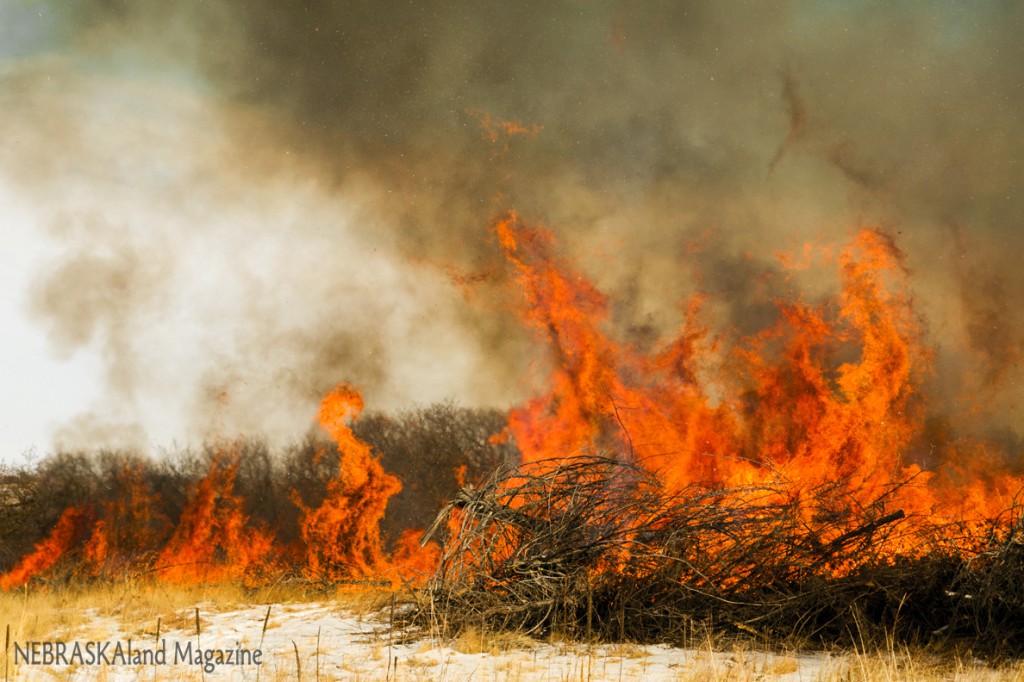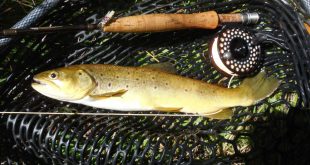 In an effort to reclaim native grassland ridges and openings, biologists at Grove Lake Wildlife Management Area near Royal have been cutting down eastern red cedar trees that have overrun many parts of the WMA. Although native to Nebraska, cedar trees are often invasive. They thrive and spread quickly, and if left unchecked, cedars can take over a piece of ground in just a few years, choking out more desirable vegetation and wildlife species that depend on open grassland.
In an effort to reclaim native grassland ridges and openings, biologists at Grove Lake Wildlife Management Area near Royal have been cutting down eastern red cedar trees that have overrun many parts of the WMA. Although native to Nebraska, cedar trees are often invasive. They thrive and spread quickly, and if left unchecked, cedars can take over a piece of ground in just a few years, choking out more desirable vegetation and wildlife species that depend on open grassland.
Like a pest, curbing the threat of cedar trees is a constant chore. If you have had the chance to explore Grove Lake WMA, you may have noticed the many piles of cut cedar trees scattered throughout the property. These piles are there because Grove Lake biologists are waiting for a good snow. With enough snowfall, they bring out the “terra torch,” a device that resembles a kind of flamethrower, to get ready to burn the piles. With weather conditions finally right this week to safely burn, wildlife biologist Lucas Negus and his team set out to burn as many piles as they could. “Other options for use of the cedar trees were explored, including chipping and logging, but because of our remote location we couldn’t get anyone to consider using them,” said Negus.
Burning gets rid of these wood piles, and some live cedar trees, to open up ground for other species to flourish. For wild turkeys, open ground is important as nesting, brood rearing and foraging habitat. At Grove Lake, getting rid of competing cedar trees will also help burr oaks thrive, which provide roosting and acorns(food) for the turkeys. Other wildlife species that depend on or prefer open grasslands are prairie chickens, Northern Bobwhites, rabbits, grassland rodents and grassland songbirds, to name a few. In time, the areas where the cedar piles were will naturally regrow into native grassland and forbs, depending on seed sources and soil type, Negus said. In some cases, these “spots” may also be reseeded with native vegetation if needed.
Piles were ignited with a “terra torch” that spewed a mixture of petroleum fuels and a gelling agent. Isolated stacks of roaring flames and smoke lighted the hills as ash fell from the sky. Giant cedar piles went up into a blaze and disappeared in a matter of minutes. An hour in and it’s easy to lose track of how many fires were started. Standing there, it was like the world was bursting into flames, except the flames would die when the piles were gone, stopped by mud and surrounding snow.
There were spectators by the road, neighbors probably wondering what those crazy Game and Parks people were up to again. No need for worry, folks. The boys had everything under control.
 Nebraskaland Magazine
Nebraskaland Magazine



